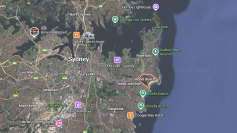Before the 737 MAX, Boeing's flight-control system in the company's military tanker jet, the Maneuvering Characteristics Augmentation System (MCAS), had key safeguards that prevent the misfiring implicated in two of its crashes: the Lion Air jet in October 2018 and the Ethiopian Airlines MAX in March 2019 that killed 346 people.
People familiar with the matter said that engineers who worked on the flight-control system for 737 MAX didn't include key safeguards that were present in earlier versions of the same system used on Boeing's military tanker jet.
Unlike MAX's version of MCAS that just relies on one input from the plane's two sensors that measure the angle of the plane's nose, the older MCAS relies on the inputs of multiple sensors.
The MAX MCAS version also proved difficult for pilots to override.
The Wall Street Journal reported that Indonesia is expected to blame the MCAS design coupled with pilot missteps and US oversight lapses in its final report on the investigation of the Lion Air jet crash.
People familiar with the matter said that Boeing will make the MCAS it is revising similar to it's the older version used in the tankers.
Boeing didn't specify why the MCAS is different in MAX but commented that the systems are not comparable.
With its revised MCAS, Boeing said the MAX will be among the safest airplanes.
A source said the first MCAS was designed by Boeing for its military tanker around the early 2000s.
Boeing's wide-body 767 commercial jet is an offshoot of this tanker.
It has pods on its wings for air-to-air refueling of fighters and other warplanes.
These pods add lift but in the process cause the tanker's nose to pitch up in some flight conditions.
This is why engineers designed the MCAS to push down the tanker's nose if needed, to comply with the Federal Aviation Agency (FAA) standards.
Boeing, in competition with Airbus SE, began developing MAX in 2011 in answer to Airbus' single-aisle passenger jet.
Boeing's selling point over Airbus is 737 MAX' fuel-efficiency.
However, fuel-efficient engines are larger and have to be placed in a more forward position on the wing compared to past 737 models.
This causes the plane's nose to pitch up in some flight conditions, having the same effect as the pods on Boeing's military plane.
The engineers who worked on the tanker suggested MCAS as a solution for the MAX engineers.
The company said it isn't aware of the original MCAS reliance on multiple sensors measuring the angle of the plane's nose when the engineers designed the MCAS for the 737 MAX.
The company said a single"angle of attack sensor" was thought sufficient and the company followed regulatory requirements.
However, company engineers and those familiar with the designs said other systems on earlier 737s just relied on single sensors.
Should the plane's MCAS misfire, MAX engineers determined that pilots would quickly see this as an emergency runaway stabilizer and do a longstanding cockpit procedure to counteract it.
In contrast, according to a person familiar with the tanker project, the tanker's more advanced flight-control computer systems made it easy for MCAS to compare data from different sensors.
Will Roper, an assistant Air Force secretary who is the branch's procurement chief said that tankers "have better sensor data."
Those familiar with the matter said, tankers' MCAS another missing safeguard in 737 MAX, besides reliance on multiple sensors to measure the angle of the plane's nose, is the ability of the pilot to easily override MCAS by just pulling back on the controls.
MAX' MCAS remains active even if pilots are pulling back already on its controls making it more complicated to control the plane.
737 MAX Ethiopia crash was the final straw that grounded worldwide 737 MAX affecting global airline finances and planning.






